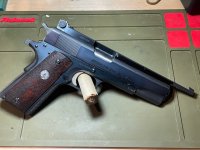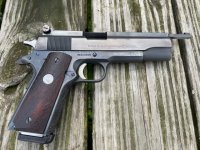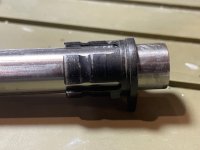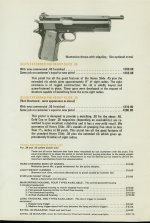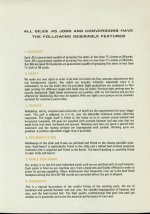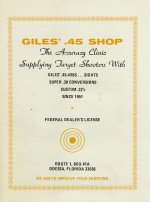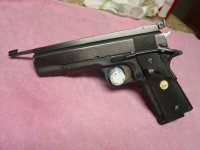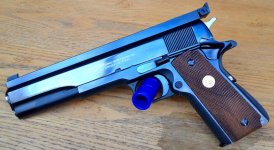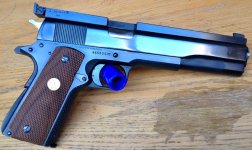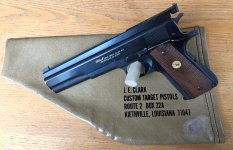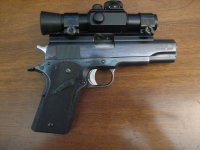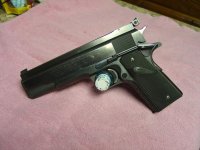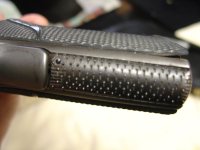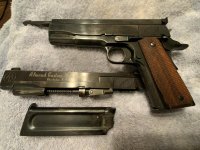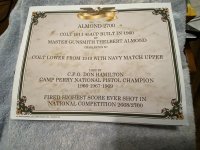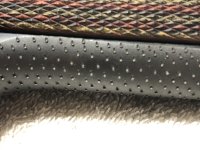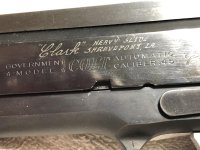I didn't want to hijack the other Custom 1911 thread since it is geared for new production 1911's.
This is for old school .45's. Please post what you got.
This one is from Giles 45 Shop, Odessa FL. It is built on an early 70's Colt Government Model. Giles rib with wagon wheel rear sight with an extended front sight. Stippled front and rear grip frame. From what I have read, Mr Giles would add pins (corrected) inside the slide to assist with barrel lockup, anywhere from 1 to 3 welds. This one has one, on the left inside the slide. Lock up is still extremely tight after 50yrs. The slide is ball bearing smooth, and I really like the short trigger.
I loaded 200 gr LSWC over 3.5gr of Bullseye powder and it shot POA right off the bat. Super sweet and lots of fun.
I know it isn't holster friendly but it sure is sweet
Please post your old school .45's
Tim
This is for old school .45's. Please post what you got.
This one is from Giles 45 Shop, Odessa FL. It is built on an early 70's Colt Government Model. Giles rib with wagon wheel rear sight with an extended front sight. Stippled front and rear grip frame. From what I have read, Mr Giles would add pins (corrected) inside the slide to assist with barrel lockup, anywhere from 1 to 3 welds. This one has one, on the left inside the slide. Lock up is still extremely tight after 50yrs. The slide is ball bearing smooth, and I really like the short trigger.
I loaded 200 gr LSWC over 3.5gr of Bullseye powder and it shot POA right off the bat. Super sweet and lots of fun.
I know it isn't holster friendly but it sure is sweet
Please post your old school .45's
Tim
Attachments
Last edited:

